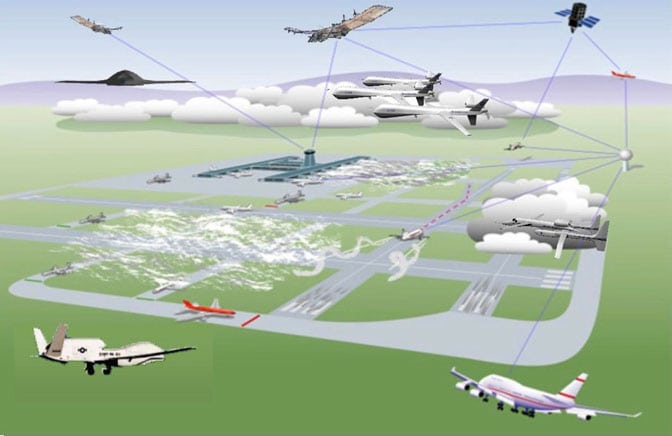
SESAR Joint Undertaking has released a plan to integrate UAS into air traffic control. File Photo
SESAR JU, the group tasked by the European Commission and Eurocontrol with guiding Europe toward integrated free, open skies throughout the continent over the coming years, has released a subset of its master plan focusing on the integration of drones into Europe’s airspace.
Spoiler alert: Drones will be part of Europe’s future, per SESAR JU Executive Director Florian Guillermet. It’s his first sentence.
Here are some highlights of the plan’s recommendations:
- Much of the anticipated drone integration relies on development of the “U-space,” a highly automated set of services intended to interface with air traffic control and enable routine missions. This will require a greater level of connectivity.
- Some airspace will be designated for specific kinds of traffic, while others will be jointly used by different types.
- Military will also be integrated into the wider traffic situation (excluding where mission requirements demand otherwise).
- There will be significantly increased UAS activity at airports, both using the space and performing inspections.
- UAS operating between 500 and 60,000 feet will have to be integrated into conventional ATM. The expected timeline is adoption in 2020 and operations from 2023.
- UAS operating in urban areas will have more stringent requirements, e.g. navigation accuracy and detect-and-avoid capabilities.
- High-altitude flights going above FL 660 airspace will also be integrated; for example, the entry and exit procedures of high-altitude pseudo-satellites providing broadband communications access.
The SESAR plan aims to integrate all air traffic and all airspace throughout participating European countries — and ultimately to expand from there — in the coming years, with specific goals and benchmarks for 2020.